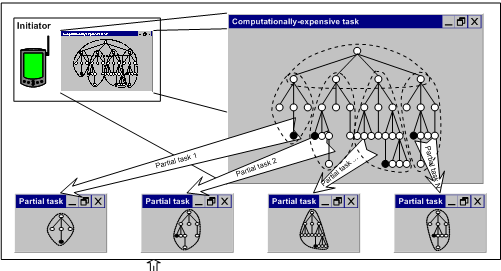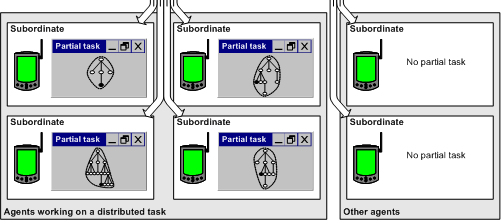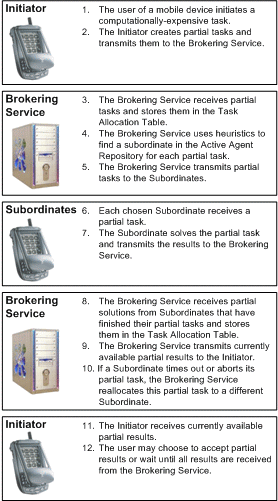Computational grid of wireless mobile devices
Grid computing provides the anytime and anywhere availability of computing resources and/or computing power. Currently, grid computing emphasizes the aspects of seamlessly distributing large scale computations across geographically dispersed and homogeneous sources of computing power.

This project deals with the integration of mobile devices into a computational grid. Generally, there are two approaches to integrating mobile devices and computational grids. On the one hand, wireless mobile devices can be used as an interface to a computational grid. They can be used to submit jobs to the grid, monitor job execution, and receive results from the grid. In this approach, users can manage their grid jobs anytime and anywhere provided that there is a wireless connectivity.

On the other hand, wireless mobile devices could act as nodes in a computational grid providing the grid's computing power. Today, performance of mobile devices is approaching that of lower-end laptops; wireless networking coverage is expanding rapidly, and the number of mobile devices and their users is high and continues to grow.

A computational framework build as an aggregation of wireless
mobile devices can be a useful tool in emergency situations,
which are characterized by a loss of power and communication
infrastructure.
 In such situations there may be a need for
peer-to-peer communication coverage with the maximal usage of
available resources running off batteries.
In such situations there may be a need for
peer-to-peer communication coverage with the maximal usage of
available resources running off batteries.
In this project, we created a fully functional prototype for a grid for wireless mobile devices. We analyzed the concept of grid computing and implemented all aspects of the grid computing framework similar to the Globus project to support wireless mobile devices such as PDA's and smart phones. We focused on the issues of task distribution, communication protocols, device mobility, load balancing and network efficiency under stress and instability, and efficient wireless communications.
Our framework operates with real mobile devices (Dell Axim PDA's), but for the experimental purposes, it can also work with hundreds of simulated devices modeled as a distributed multi-agent system. For experimental purposes, we chose the problem of vehicle routing on a geographical map, for which we developed a specialized distributed parallel version of IDA* search algorithm.
We conducted studies of grid network efficiency measured as the average computational speed under the impact of the three factors: device mobility, device population size, and computational task initiation frequency.
Students
- Arris Ray
Publications
- Available here